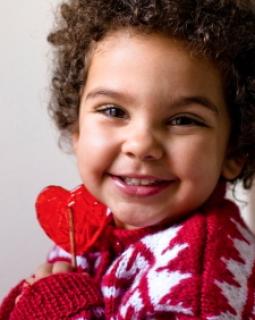Advertisement
Like many Unitarian Universalist adults attempting to articulate their theological beliefs, children are more likely to tell us what love is not: It’s not jealousy, it’s not hurting someone else’s feelings, it’s not “just words.”
Perhaps this is in part because holidays like Valentine’s Day celebrate love without really communicating messages about what it means to truly love another person. We all feel it, most of us express it on a fairly regular basis (or at least believe that we do), and we have a real human need to seek love from others.
It’s also likely that because love is an abstract concept, it can be hard for children to express their ideas about it while they are still concrete thinkers. Instead, we can stimulate our children’s thinking about love by asking questions such as: “How does love feel?” or “When do you feel love?” or “How do you show love to others?”
Etan Boritzer’s wonderful book, What is Love? presents this abstract concept in terms of a rainbow that holds the many feelings we have for others inside of it, expressing the idea that we can love someone and still be angry about something they have done. It also explores the idea that there are many different kinds of love in the world and that the way we love ice cream is very different from the way we love people in our family. Sharing this book with your children can open up their minds to the concept that love is diverse and expansive and opens the door to values like generosity, gratitude, and compassion.
Being parents who affirm the value of all families loving one another (and not just those that fit the traditional notion of one-husband, one-wife model), we also need to help our children conceptualize a larger idea of romantic love beyond the one perpetuated by our heterosexually-biased culture. One of my all-time favorite books about family is And Tango Makes Three, a children’s book based on an amazing true story of two male penguins at New York’s Central Park Zoo who “adopted” an egg and raised it as their chick.
Likewise, I was personally thrilled to see the picture of Elton John and his partner David Furnish with their newborn baby Zachary on the cover of US Weekly magazine just the other day. The picture celebrates their family and affirms their love for one another—just as if it was a feature on any other celebrity couple sharing their pride after the birth of a newborn. This is the way it should be, publicly affirming this gay couple as any other family would be under these circumstances.
Yet an Arkansas grocery store chain, Harps, felt the need to place a shield over it in the aisle display to “protect young Harps shoppers” as if it were some sort of pornography. (It was later removed after a tweet about it circulated around the internet and multiple complaints were made over it.) In the comments on one website over this ensuing controversy, one mother posted that she “didn’t want to have to explain to her four-year-old what gay means.”
And I don’t want to have to explain to my children why some people feel that love can be wrong if it means loving someone of the same gender as yourself. I want them to see images of loving families of all colors, genders, shapes, sizes, and flavors and understand that when they grow up they will enter into a loving, caring, and affectionate relationship with someone of a different gender, someone of the same gender as they are, or possibly with someone who has a gender which doesn’t necessarily match their genitalia.
My children and I won’t see a TV commercial of a woman presenting another woman with a Valentine’s gift, or a man taking another man out for a romantic dinner—at least not this year. But I will buy a copy of that magazine just so my children can see what I saw: two fathers who love each very much and wish to share that love with a child as part of a family. That’s what we all need this Valentine’s Day—more images of children growing up as part of loving families. And maybe some chocolate (which I really happen to love).
Photograph above © onebluelight/iStockphoto
